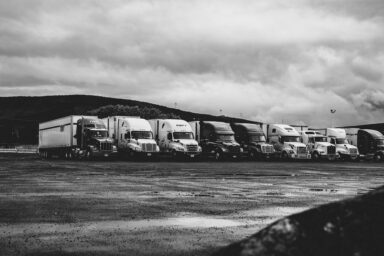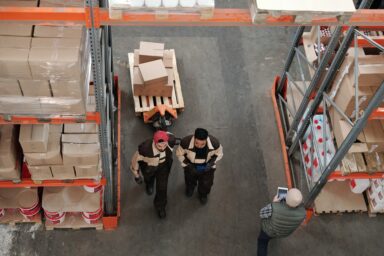
Navigating the Road: Unpacking the Impact of Fuel Levies on Australian Logistics
16 August 2023In the vast expanse of the Australian outback, where distances seem to stretch endlessly, logistics become a critical factor in connecting communities and supporting economic activities. The backbone of this logistical network is the transportation sector, heavily reliant on road infrastructure and fuelled by diesel. However, the ever-present challenge of distance is further compounded by the impact of fuel levies, shaping the landscape of Australian logistics in profound ways.
The Fuel Levy Landscape
Fuel levies, also known as fuel taxes or excise taxes, are charges imposed on the sale of fuel. In Australia, these levies are applied primarily to diesel and petrol, both of which are essential for transportation and machinery used in various industries. The revenue generated from these levies is allocated to fund infrastructure projects and maintain road networks, ensuring safe and efficient travel across the country.
Impact on Freight Costs and Pricing
For the logistics industry, fuel costs form a significant portion of overall expenses. Fuel levies directly affect the price of fuel, which in turn ripples through the supply chain. As the price of diesel rises due to levies, freight companies are faced with a dilemma: absorb the additional costs or pass them on to consumers. Often, the latter option is chosen, leading to higher prices for goods and services. This can impact consumer spending, leading to potential shifts in demand and changes in consumption patterns.
Regional Disparities
Australia’s logistics landscape is marked by stark regional disparities, with vast distances separating major cities and rural communities. Fuel levies have a disproportionate impact on rural and remote areas, where transportation costs are already high due to longer distances and less efficient routes. As levies increase, these areas face the brunt of higher prices, affecting everything from groceries to medical supplies. The challenge of ensuring equitable access to goods and services becomes even more pronounced in these areas.
Innovation and Efficiency
While fuel levies might initially seem like a hindrance to the logistics sector, they also act as a catalyst for innovation and efficiency. Faced with rising costs, companies are incentivized to adopt more fuel-efficient technologies and practices. This has led to the exploration of alternative fuel sources, such as natural gas and electric vehicles, as well as investments in route optimization and logistics software to streamline operations. In the long run, these adaptations can lead to a more sustainable and cost-effective logistics industry.
Government Investment and Infrastructure
One of the primary intentions behind fuel levies is to fund infrastructure development and maintenance. However, the effectiveness of this funding mechanism relies heavily on the government’s commitment to allocating these funds appropriately. When fuel levy revenues are funnelled ]back into road maintenance and expansion projects, it contributes to safer and more reliable transportation networks. On the flip side, misallocation or insufficient investment can lead to deteriorating infrastructure, elongated travel times, and increased operational costs for logistics companies.
Environmental Considerations
The impact of fuel levies extends beyond economics; it intersects with environmental concerns as well. Higher fuel prices incentivize the adoption of greener transportation solutions. The Australian logistics industry is exploring ways to reduce its carbon footprint by integrating electric and hybrid vehicles into their fleets, lowering emissions and contributing to the nation’s sustainability goals. Fuel levies, in this context, become a tool for pushing the industry towards cleaner practices.
Conclusion
In the vast and diverse landscape of Australia, fuel levies play a crucial role in shaping the logistics sector. The impact of these levies goes far beyond the surface, influencing freight costs, pricing, regional disparities, innovation, government investment, and environmental considerations. The delicate balance between funding infrastructure and supporting economic activities requires careful management and allocation of resources. As the logistics industry navigates these challenges, there is an opportunity to foster innovation, promote sustainability, and ensure that the vast distances that define Australia do not hinder its economic and social progress.


